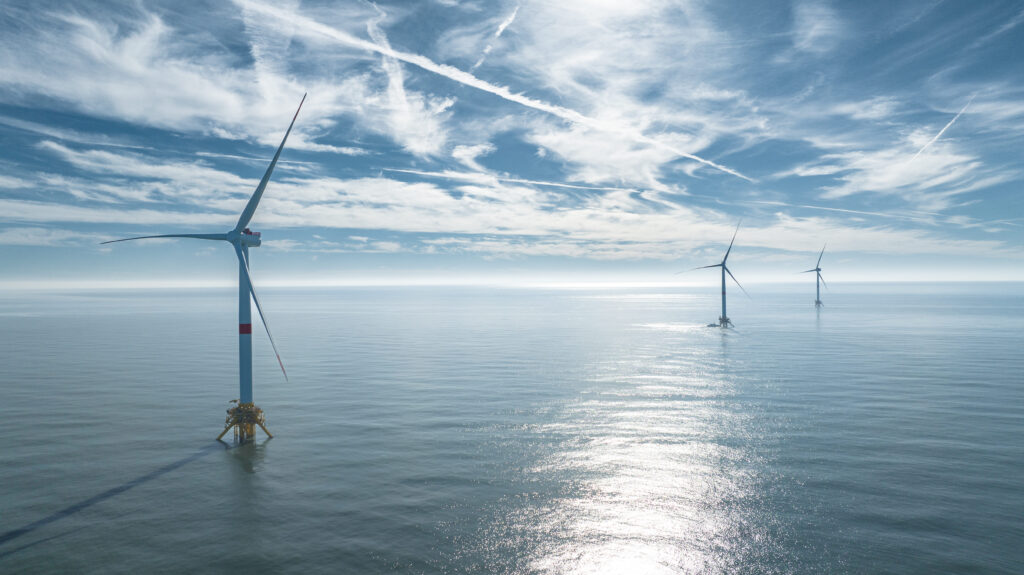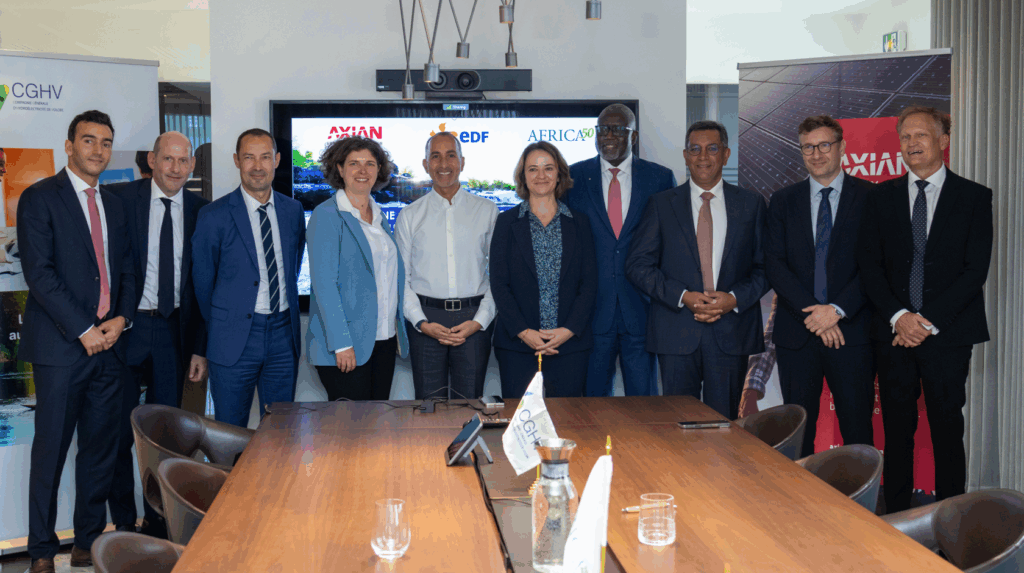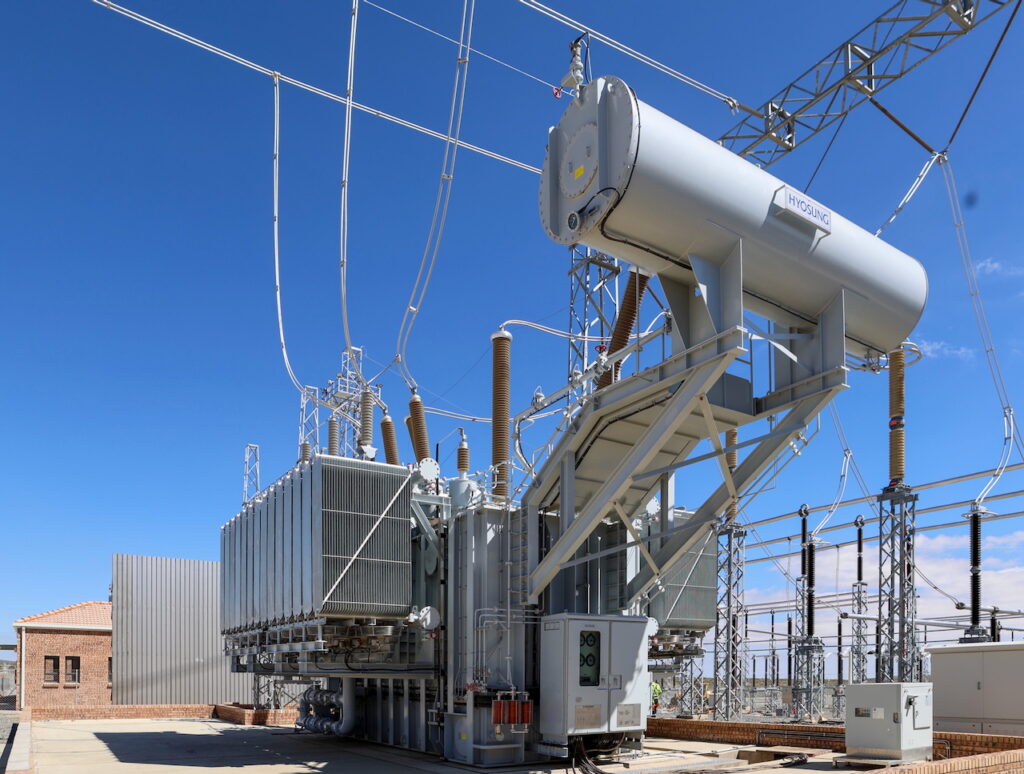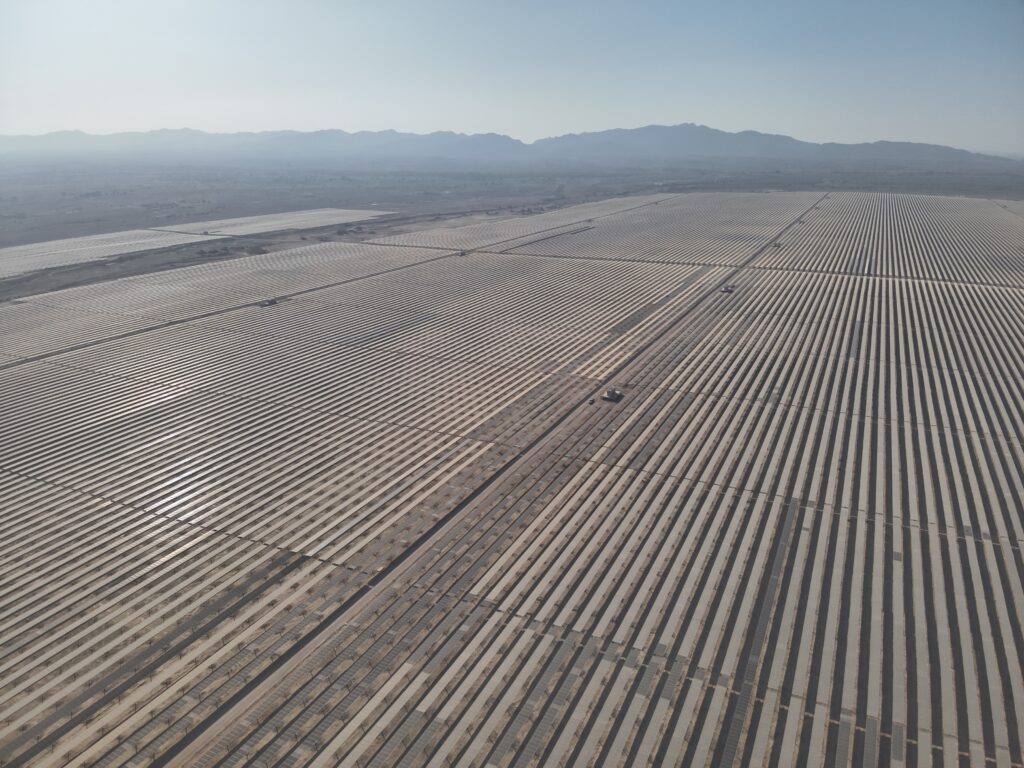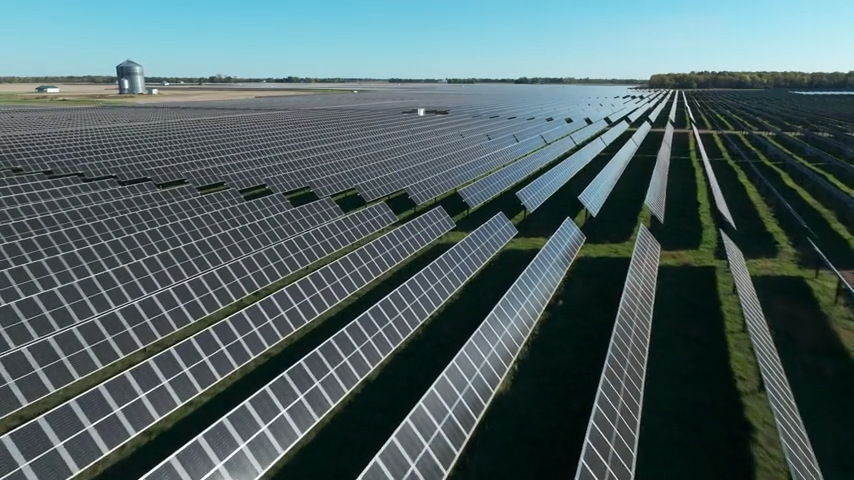Paris le 5 juin 2025 – Le groupe EDF, à travers sa filiale EDF Renouvelables, et Enbridge Éolien France 2 S.a.r.l, filiale d’Enbridge Inc. et Canada Pension Plan investment Board (CPP Investments), annoncent la mise en service complète du premier parc éolien flottant français, Provence Grand Large situé au large du golfe de Fos (Bouches-du-Rhône). D’une puissance de 25 MW, l’installation alimentera chaque année l’équivalent de la consommation électrique de 45 000 personnes.
Une première technologique en France et en Méditerranée
Le parc de Provence Grand Large est un projet pilote avec trois éoliennes flottantes installées à 17km des côtes de Port-Saint-Louis-du-Rhône.
Premier parc éolien flottant en France et sur l’ensemble du bassin méditerranéen, le parc de Provence Grand Large s’appuie sur une technologie d’ancrage inédite. Construites par Siemens Gamesa Renewable Energy, les trois éoliennes du parc sont installées sur des flotteurs à lignes d’ancrage tendues inspirées d’une technologie utilisée pour stabiliser les plateformes pétrolières. Développée par SBM Offshore et IFP Energies Nouvelles, cette technologie est adaptée aux zones de grandes profondeurs et permet une grande stabilité du flotteur. Son adaptation pour des flotteurs d’éoliennes en mer est une première mondiale.
Construits par Prysmian, les câbles dynamiques, qui s’adaptent aux mouvements des flotteurs, permettent de transporter l’électricité produite par les éoliennes de Provence Grand Large. Connectés à des câbles sous-marins puis terrestres, ils assurent le transport de l’électricité produite jusqu’au poste de raccordement à terre opéré par RTE.
Un projet de territoire qui enrichit la connaissance scientifique du milieu marin
Depuis 2011, un dialogue permanent a été instauré entre les équipes de Provence Grand Large et l’ensemble des acteurs locaux : autorités locales, élus, pêcheurs professionnels, associations, habitants, etc. Ce dialogue a permis d’intégrer l’ensemble des enjeux du territoire que ce soit en termes de développement économique local ou en matière d’environnement (système de détection par caméra d’effarouchement sonore pour les oiseaux qui s’approcheraient, collecte de données à partir d’un radar…). Un comité de suivi, de surveillance et d’information regroupant des experts scientifiques a notamment été institué par l’Etat depuis 2022 pour garantir une expertise scientifique et technique indépendante dans l’accompagnement des mesures environnementales mises en œuvre par le parc de Provence Grand Large, et assurer la transparence de l’information sur les données collectées. Ces données enrichissent les connaissances sur ce volet et seront capitalisées pour la construction de prochains parcs éoliens en mer flottants.
Sélectionné par l’Etat en 2016 et soutenu par l’Union européenne (programmes NER 300 et Feder), le Programme d’investissements d’avenir (PIA) opéré par l’Agence de la transition écologique (ADEME), et la Région Sud, le projet Provence Grand Large bénéficie du soutien de la Métropole Aix-Marseille-Provence et de l’ensemble des collectivités du Golfe de Fos.
Bernard Fontana, Président-Directeur général d’EDF, a déclaré : « Nous sommes fiers de mettre en service le premier parc éolien en mer flottant de France, un projet important pour la souveraineté énergétique de notre pays. En contribuant à diversifier nos sources d’énergie renouvelable, ce parc pilote participe activement à la transition énergétique de la France, tout en soutenant l’émergence d’une filière industrielle de pointe sur ces technologies innovantes. Je remercie l’ensemble des acteurs du territoire ainsi que les équipes d’EDF Renouvelables, et de nos partenaires, Enbridge et CPP Investments pour leur engagement. Ce parc n’aurait pas pu voir le jour sans un dialogue constant avec les élus, les associations, les pêcheurs professionnels, les représentants des aires marines protégées, acteurs économiques et riverains. Cette expérience est précieuse pour mener à bien la construction de notre second parc éolien en mer flottant, Méditerranée Grand Large, pour lequel nous avons été lauréat en décembre 2024. Ces projets s’inscrivent dans l’ambition du groupe EDF de contribuer à l’objectif de neutralité carbone d’ici 2050, en renforçant la position de la France comme acteur majeur dans l’industrie des énergies renouvelables ».
Matthew Akman, Vice-Président Exécutif Stratégie et Président de la division Énergie chez Enbridge Inc.
a déclaré : « Enbridge est fière d’être partenaire du premier parc éolien en mer flottant de France. Ce projet innovant participe au développement et ouvre de nouvelles perspectives pour le développement de la filière de l’éolien en mer et la production d’énergie bas carbone. Nous sommes heureux de compter Provence Grand Large dans le portefeuille d’Enbridge et de soutenir la transition énergétique de la région. »
Bill Rogers, Chef Énergie durable chez RPC Investments, a déclaré : « RPC Investments est heureux de soutenir le lancement du premier parc éolien en mer flottant de France aux côtés de Enbridge et EDF. Ce projet représente une étape importante et innovante en matière d’énergies renouvelable et correspond à notre engagement pour investir dans des opportunités qui contribuent à un avenir bas carbone. »
Bill Rogers, Directeur général en charge des énergies durables, chez RPC Investments, a déclaré :
« RPC Investments est heureux de soutenir le lancement du premier parc éolien en mer flottant de France aux côtés de Enbridge et EDF. Ce projet représente une étape importante et innovante en matière d’énergies renouvelable et correspond à notre engagement pour investir dans des opportunités qui contribuent à un avenir bas carbone. »
